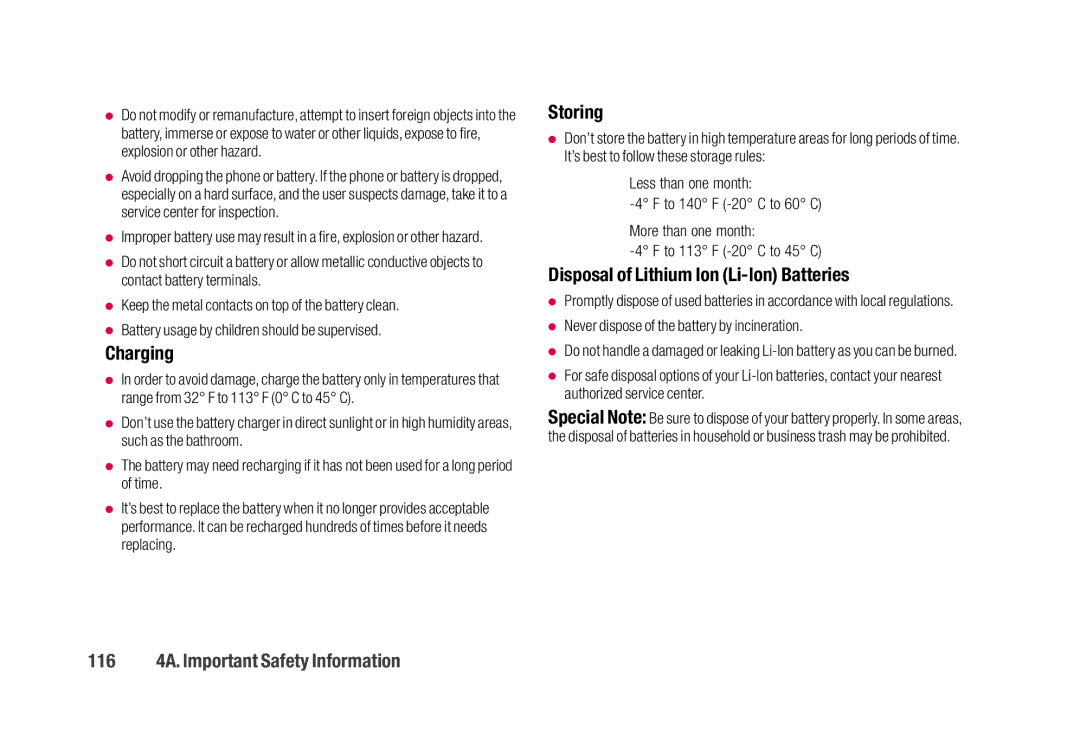⬤Do not modify or remanufacture, attempt to insert foreign objects into the battery, immerse or expose to water or other liquids, expose to fire, explosion or other hazard.
⬤Avoid dropping the phone or battery. If the phone or battery is dropped, especially on a hard surface, and the user suspects damage, take it to a service center for inspection.
⬤Improper battery use may result in a fire, explosion or other hazard.
⬤Do not short circuit a battery or allow metallic conductive objects to contact battery terminals.
⬤Keep the metal contacts on top of the battery clean.
⬤Battery usage by children should be supervised.
Charging
⬤In order to avoid damage, charge the battery only in temperatures that range from 32° F to 113° F (0° C to 45° C).
⬤Don’t use the battery charger in direct sunlight or in high humidity areas, such as the bathroom.
⬤The battery may need recharging if it has not been used for a long period of time.
⬤It’s best to replace the battery when it no longer provides acceptable performance. It can be recharged hundreds of times before it needs replacing.
Storing
⬤Don’t store the battery in high temperature areas for long periods of time. It’s best to follow these storage rules:
Less than one month:
More than one month:
Disposal of Lithium Ion (Li-Ion) Batteries
⬤Promptly dispose of used batteries in accordance with local regulations.
⬤Never dispose of the battery by incineration.
⬤Do not handle a damaged or leaking
⬤For safe disposal options of your
Special Note: Be sure to dispose of your battery properly. In some areas, the disposal of batteries in household or business trash may be prohibited.
